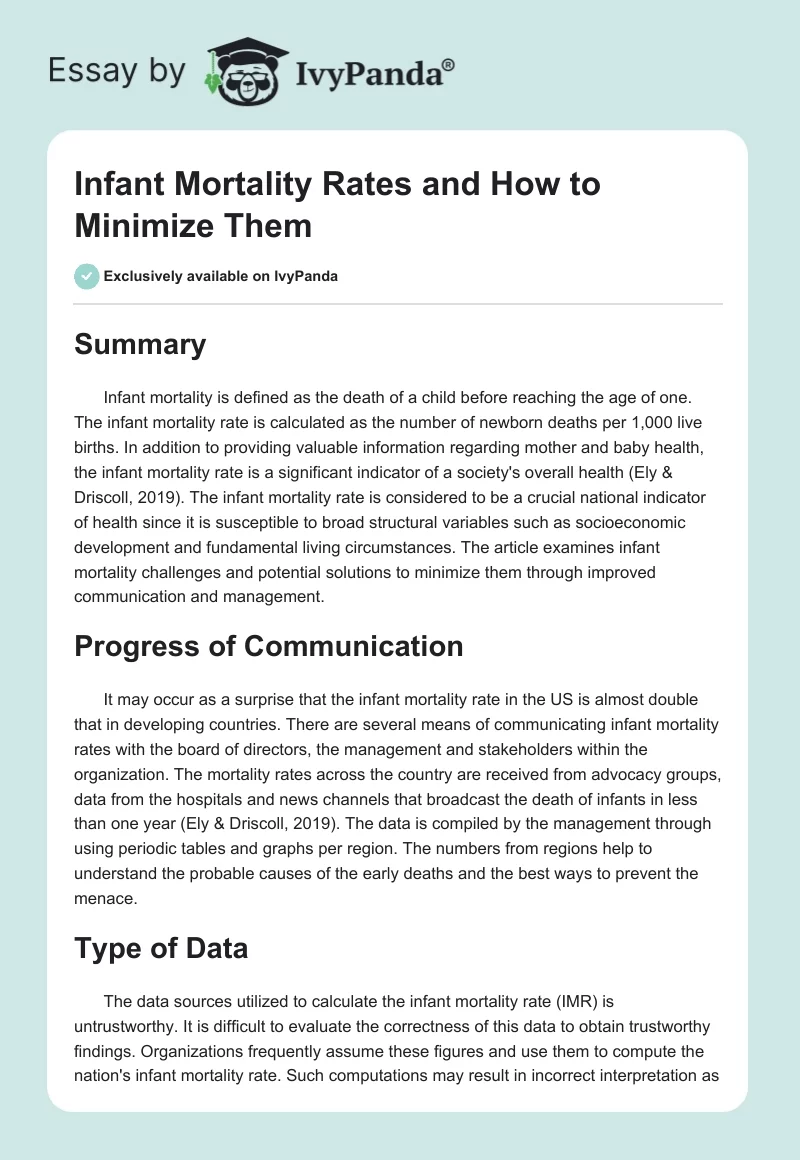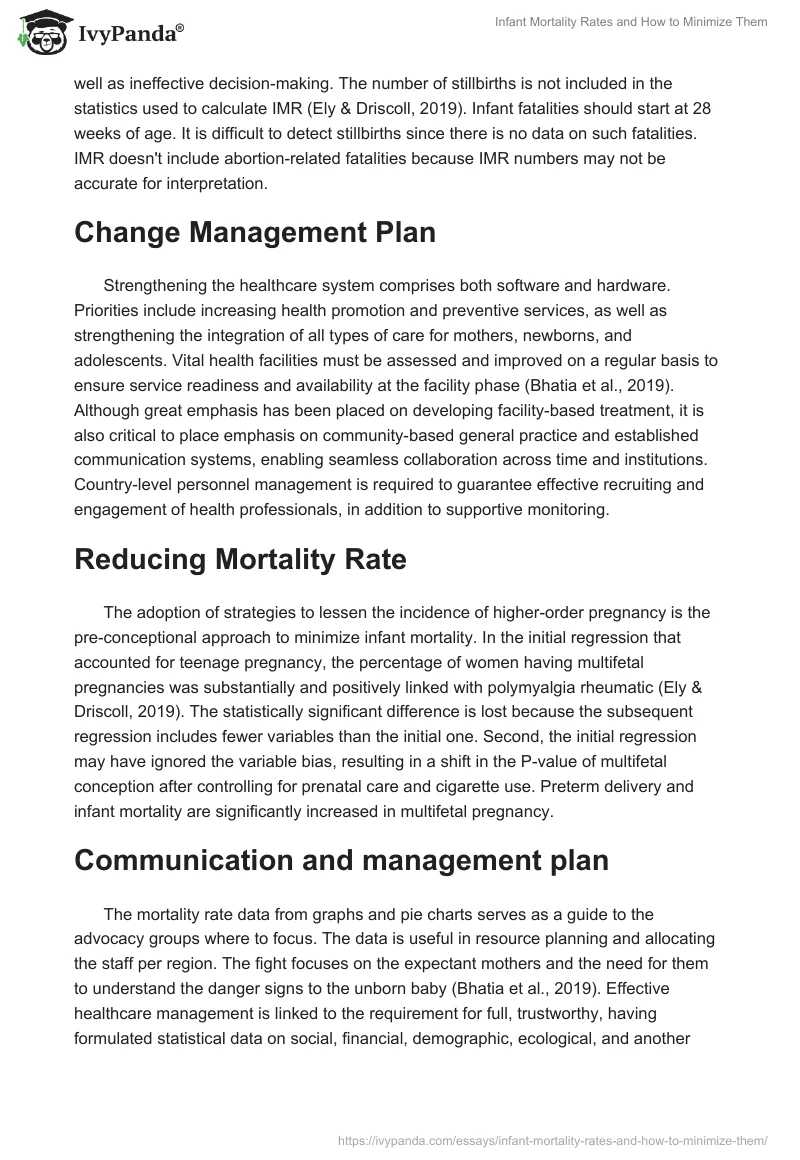Summary
Infant mortality is defined as the death of a child before reaching the age of one. The infant mortality rate is calculated as the number of newborn deaths per 1,000 live births. In addition to providing valuable information regarding mother and baby health, the infant mortality rate is a significant indicator of a society’s overall health (Ely & Driscoll, 2019). The infant mortality rate is considered to be a crucial national indicator of health since it is susceptible to broad structural variables such as socioeconomic development and fundamental living circumstances. The article examines infant mortality challenges and potential solutions to minimize them through improved communication and management.
Progress of Communication
It may occur as a surprise that the infant mortality rate in the US is almost double that in developing countries. There are several means of communicating infant mortality rates with the board of directors, the management and stakeholders within the organization. The mortality rates across the country are received from advocacy groups, data from the hospitals and news channels that broadcast the death of infants in less than one year (Ely & Driscoll, 2019). The data is compiled by the management through using periodic tables and graphs per region. The numbers from regions help to understand the probable causes of the early deaths and the best ways to prevent the menace.
Type of Data
The data sources utilized to calculate the infant mortality rate (IMR) is untrustworthy. It is difficult to evaluate the correctness of this data to obtain trustworthy findings. Organizations frequently assume these figures and use them to compute the nation’s infant mortality rate. Such computations may result in incorrect interpretation as well as ineffective decision-making. The number of stillbirths is not included in the statistics used to calculate IMR (Ely & Driscoll, 2019). Infant fatalities should start at 28 weeks of age. It is difficult to detect stillbirths since there is no data on such fatalities. IMR doesn’t include abortion-related fatalities because IMR numbers may not be accurate for interpretation.
Change Management Plan
Strengthening the healthcare system comprises both software and hardware. Priorities include increasing health promotion and preventive services, as well as strengthening the integration of all types of care for mothers, newborns, and adolescents. Vital health facilities must be assessed and improved on a regular basis to ensure service readiness and availability at the facility phase (Bhatia et al., 2019). Although great emphasis has been placed on developing facility-based treatment, it is also critical to place emphasis on community-based general practice and established communication systems, enabling seamless collaboration across time and institutions. Country-level personnel management is required to guarantee effective recruiting and engagement of health professionals, in addition to supportive monitoring.
Reducing Mortality Rate
The adoption of strategies to lessen the incidence of higher-order pregnancy is the pre-conceptional approach to minimize infant mortality. In the initial regression that accounted for teenage pregnancy, the percentage of women having multifetal pregnancies was substantially and positively linked with polymyalgia rheumatic (Ely & Driscoll, 2019). The statistically significant difference is lost because the subsequent regression includes fewer variables than the initial one. Second, the initial regression may have ignored the variable bias, resulting in a shift in the P-value of multifetal conception after controlling for prenatal care and cigarette use. Preterm delivery and infant mortality are significantly increased in multifetal pregnancy.
Communication and management plan
The mortality rate data from graphs and pie charts serves as a guide to the advocacy groups where to focus. The data is useful in resource planning and allocating the staff per region. The fight focuses on the expectant mothers and the need for them to understand the danger signs to the unborn baby (Bhatia et al., 2019). Effective healthcare management is linked to the requirement for full, trustworthy, having formulated statistical data on social, financial, demographic, ecological, and another sociological phenomena in the sphere of public preventive care. Statistics play an important role in community safety and primary prevention.
References
Bhatia, A., Krieger, N., & Subramanian, S. V. (2019). Learning from history about reducing infant mortality: Contrasting the centrality of structural interventions to early 20th-century successes in the United States to their neglect in current global initiatives. The Milbank quarterly, 97(1), 285–345.
Ely, D. & Driscoll, A. (2019). Infant mortality in the United States, 2017: Data from the period linked birth/infant death file. National Vital statistics reports : from the Centers for Disease Control and Prevention, National Center for Health Statistics, National Vital Statistics System, 68(10), 1–20.


